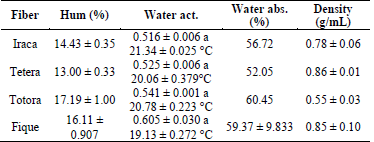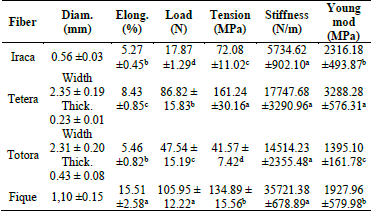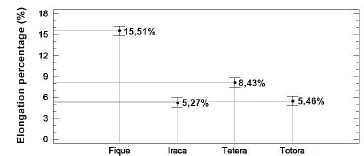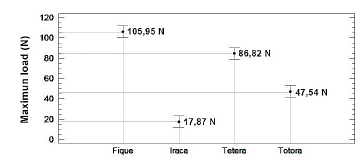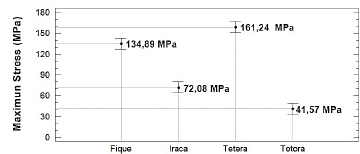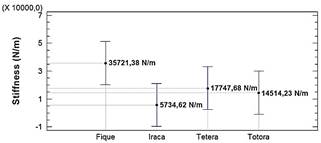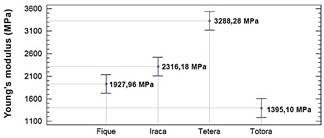1. Introduction
The Department of Nariño, in southern Colombia, is characterized by being one of the main centers of artisanal production in the country. Among the comparative advantages in the sector, it is highlighted that artisans from Nariño have the highest participation quota on a national scale, with 14.34%, and their economic activity generates more than 10,000 direct and indirect employment opportunities in the region [1]. A large amount of this artisanal production is based on the transformation of vegetable fibers for the production of products of different kinds, such as the well-known toquilla straw hats from Sandoná. Since pre-colonial times, different plant fibers have been used in Nariño, such as Wheat Tamo (Triticum aestivum), Fique (Furcraea hexapetala), Junco (Scirpus holoschoenus), Iraca (Carludovica palmata), and Guada (Guadua angustifolia), for the elaboration of various objects and supplies in different manufacturing and construction processes [2]. Despite the economic importance of the artisanal sector of the region, limited studies on the physicochemical and technical characterization of some of these vegetable fibers have been carried out in order to present new proposals for reinforced materials for varied research and commercial results [3,-5], leaving aside the possibility of carrying out a comparative analysis of this type of fiber to find possible competitive advantages when used as a productive raw material.
Considering this approach, and the division of the department of Nariño into 3 clearly defined physiographic regions, this work aims to carry out a comparative analysis between four plant fibers that are of great commercial and cultural importance; the Fique (Furcraea macrophylla) and Iraca or Paja Toquilla (Carludovica palmata) for the Andean region [6-8], Tetera (Stromanthe stromathoides or Stromanthe jacquinii) for the Pacific Plain region [9], and the Totora (Schoenoplectus californicus) for the Amazon slope region [10].
2. Materials and methods
2.1 Preparation of the samples
Iraca fiber was collected in the municipality of Sandoná, Nariño, through the artisan and merchant Alberto de la Rosa, between October and November, 2018. In this municipality, the Iraca is presented as the "Iraca hairstyle," resembling a heart containing about 50 strands, measuring approximately 0.80 to 1 meter in length, and with an average diameter of approximately 1.4 millimeters.
The Fique fiber was collected in the municipality of Guaitarilla, Nariño, through the artisan Nubia Araujo, between October and November, 2018. The Fique is presented in web-like rolls that measured approximately 10 meters in length, and whose cord diameter was 1 to 3 millimeters, depending on the presentation of the product for sale.
The Tetera fiber was collected in the municipality of Ricaurte, Nariño, through the social agent Amparo Oliva, between the months of October and November of 2018. The Tetera in this municipality is presented as a ribbon, measuring 1 to 2 meters in length, and 30 to 45 millimeters in width.
The Totora fiber was collected in the municipality of Santiago, Putumayo, through Rosaura Chasoy between October and November of the year 2018. The Totora in this municipality is presented in 1.60 meter-high cylindrical poles, with an approximate diameter of 10 to 15 millimeters per cane.
2.2 Physical properties
For the analysis of the physical properties of the fibers studied, the components that were evaluated were: Density, percentage of Moisture or Water Content, Water Activity, and percentage of Water Absorption. The descriptive analysis of the physical properties was carried out with the average of 3 tests (n = 3) and standard deviation. The real density was determined according to the method of Cerón et al. [11], which uses 99.8% ethanol with a density of 0.790 g/ mL at 20°C and a 50 mL pycnometer. The ethanol was acquired in the company Químicos la Merced, in the city of Pasto, Colombia. The moisture percentage was measured using an electronic determiner (Version 1.1, Kern DBS, KERN and Sohn GmbH, Germany), in which 100± 0.01 g of sample was used. The water activity measurement was performed through the weight difference method. This evaluation is carried out in order to determine the availability and influence of water in the product [24]. Previously, the fiber samples were weighed individually on a Mono Bloc Metter Toledo electronic balance with a measuring capacity of 0.0001gr using an electronic determiner (Version 1.1, Kern DBS, KERN and Sohn GmbH, Germany), and weighed again after being exposed to temperatures from 0.51 ° C to 20.50 ° C. To measure the percentage of water absorption, a sample of 100 ± 0.01 g of fiber weighed individually was taken on a Mono Bloc Metter Toledo scale. Subsequently, it was immersed in distilled water (pH 6.5) for 24 hours, to be weighed again and to record its weight at the saturation point. To carry out this measurement, the water adhered on the surface to the fiber packages was removed using an absorbent cloth.
2.3 Chemical properties
The analysis of the chemical properties of the fibers studied included the determination of the structural chemical components of Cellulose, Hemicellulose and Lignin. Compositional tests were carried out in the specialized laboratories of the University of Nariño of Bromatology - Organic Fertilizers, using the Van Soest Sequential Oxidation KMnO4 methods for Lignin, and the Van Soest Sequential for Cellulose and Hemicellulose. For the evaluation of these properties, each sample was ground and sieved before using gravimetric techniques [12]. The TAPPI 204 standard was followed to free the analyzed sample from extractives and the TAPPI T 207 om-93 standard was used to evaluate the solubility in hot water at 95° C. The hemicellulose content was estimated by the method of ASTM D-1104 while for the cellulose content the procedure of the ASTM 1695-77 standard was followed. Finally, the insoluble lignin acid was evaluated by the procedure of TAPPI T222 standard os-74.
2.4 Mechanical properties
The mechanical properties analysis of the fibers studied included: the Elongation Percentage (%), Maximum Load (N), Maximum Load Tension (MPa), Stiffness (N/ m) and Young's Modulus (MPa). The descriptive analysis of the mechanical properties was carried out by calculating the average of 10 tests (n = 10) and standard deviation. To obtain these properties, a texturometer (LS1, LLOYD, USA) was used, to which special fiber grip jaws were incorporated. Maximum Load, Elongation, and Young's Modulus were evaluated according to the methodology described by Mina [13], and following ASTM D-3822-07, in which 100 mm of each fiber is fastened to the jaws of the equipment. The mechanical tests were carried out in triplicate at a speed of 5 mm/ min, load range of 1000 N, pre-load of 1 N and length between jaws of 100 mm.
3. Results and discussion
3.1 Analysis of the physical properties
The descriptive analysis of the physical properties was performed calculating the average of 3 tests (n=3) and their respective standard deviation. The results of the physical evaluation of the different types of vegetable fibers present in this study are presented in the Table 1.
The Table 1 shows that the fiber with the highest water content is Totora, while Tetera fiber has the lowest. This complies with the empirical evidence on the consistency of these fibers; while the Totora fiber is much more flexible and fresh to the touch, like the Fique fibers which have close humidity, the Iraca and Tetera fibers are more dry and rigid in texture.
It can also be seen that the water activity does not differ greatly between the fibers. The values of all fibers are above 0.5, which indicates the risk that this raw material is sensitive to acquiring fungi that impair its visual presentation [14].
The density allows us to determine how useful the fiber is for the production of different products that require less weight per volume, such as basketry, bags, and clothing. Tetera and Fique fibers have the highest density, while Totora fiber is the least dense. This can also be verified empirically, as Totora is widely used in surface decoration as it is easy to cut and handle.
The evaluated physical properties of the fibers make it possible to clearly identify when it is possible to use them in the manufacturing of baskets and packaging products, where average humidity values of 12% are required. The same is true for water absorption- as they are fibers of biological origin, they tend to absorb much more water than other synthetic materials such as polypropylene. As previously suggested, high percentages of water absorption can deteriorate the product due to microorganism attack which can result in changes of other properties, such as density and mechanical characteristics [15].
Based on the physical properties, it was found that one of the advantages of using Tetera, Iraca, Fique and Totora is durability over time. Although the analytical results show figures that support durability, the coincidence found in the field study supports the quality of this raw material in terms of shelf life, since the drying process in which each fiber is subjected allows for more consistent handling and/ or use. In addition, the low probability of contamination (water absorption) ensures strong resistance of the fibers to contact with microorganisms.
Using the drying process as a reference, it is understood that the results of the components of Humidity, Water Activity and Water Absorption, are inversely proportional. In analytical studies, inversely proportional reactions are spoken of when one result interferes with the behavior or numerical value of another result. In this case, the results analyzed in the study of the fibers are averaged with low humidity, so that water activity is also low (with values less than 0.5%), implying that the fiber is not easily contaminated. Therefore, the results of water absorption show that being fibers with a low probability of contamination, they have a low probability of contracting fungi or other types of weeds in the material. Visually, it can be seen in the fibers that are smoother (Density), such is the case of the Tetera, or more porous (Density) in the case of the Totora, which gives an idea of the amount of water it can absorb upon submersion.
3.2 Chemical composition analysis
It is important to have measured the content of Lignin, Cellulose and Hemicellulose as some of these fibers can serve as raw materials for papermaking, as was experimented with Fique [16] and Totora [17]. Furthermore, its structural composition allows us to establish its mechanical resistance, and the use of vegetable fibers as an additive for the elaboration of materials [18-20]. For example, Córdoba et al. [4] has used the Tetera fiber to reinforce synthetic plastics and Gonzales et al. [21] and Hidalgo et al. [22], have used the Fique fiber to reinforce thermoplastic starch. Taking this into account, the Table 2 presents the chemical composition of the different types of vegetable fibers present in this study.
Table 2 Structural chemical components: Lignin, Cellulose and Hemicellulose.

* Partially dry base
Source: The Autors.
The chemical composition allows us to justify some mechanical characteristics of the fibers under study. In this way, lignin gives us some idea of flexibility, cellulose some idea of resistance and hemicellulose some idea of the deterioration that each material can present. Thus, the results of the chemical composition analysis indicates that all fibers presented similar amounts of Lignin, unlike Cellulose, which was found in higher proportions in Tetera. Despite the fact that this Totora presents the highest amount of Hemicellulose with respect to the other fibers, a low amount of Lignin was measured. With the exception of Totora, it seems that with the rest of the fibers, there is an inversely proportional relationship between the amount of Cellulose and the Hemicellulose content in each sample. The analysis of this proportion may be related to the age of the raw material and may come to be considered as a quality criterion for its selection [25]. The values reported by other authors on these components are very close to those reported in this research, and confirm that this relationship may be valid. With Tetera for example, the Cellulose content is 61.05% and for Lignin 17.2% [4]. In the case of Totora fiber, a percentage of 66.79% was found for Cellulose, 27.8% for Lignin, and 30.71% for Hemicellulose [17]. In general terms, it is possible to ensure that the low levels of Lignin are consistent with herbaceous species [23], while the high values of cellulose in the Tetera and Fique fibers allow us to give a guideline of their mechanical resistance, as will be seen later.
The main factor that has been highlighted in the results obtained is the high concentration of Cellulose, which is directly related to the flexibility of the fiber, that is, the ability of a body to bend easily without risk of breakdown. From these similar results among the 4 fibers, it is necessary to show that the most flexible component is the Tetera with 77% cellulose and 15% hemicellulose, which means that the degradation of cellulose would be 62%. This means greater flexibility in the useful life of this fiber for the elaboration of any product that requires these qualities.
Flexibility is considered to allow fibers to be adapted to textile and decoration production more easily. Totora presents a special case as, despite having a low useful life of flexibility (17%), is a fiber increasingly used as raw material for handicraft decoration products [23]. In this sense, it is important to take into account the impact of the environment on the mechanical properties of each fiber. For example, artisans assure that Totora fiber can easily acquire fungi if exposed to humid environments before the raw material drying process.
3.3 Analysis of mechanical properties
The descriptive analysis of the mechanical properties was performed by calculating the average of 10 tests (n=10) and their respective standard deviation. To determine the statistically significant differences between the different types of fibers studied, an ANOVA analysis of variance test and a Fisher's LSD test at 95% reliability were performed. In the Table 3, the letters indicate the difference according to a multiple range test between each fiber for each of the variables.
Evaluating the formal aspect is important in order to determine the possible use of fibers as raw material for production where there are certain types of machinery restrictions, such as sewing machines and spinning machines commonly used in fabrics using round thread. Taking this approach into account, the cylindrical appearance of the Fique and Iraca fibers makes them particularly suitable for these types of processes.
The percentage of elongation can be defined as the percentage of stretch based on an initial distance at which a force is applied to the fiber; it is a distance that the fiber is capable of stretching until breaking, using an initial distance as a reference point. With an ANOVA test p-value of less than 0.05, it is possible to affirm that there are significant differences between the percentage of elongation of the studied fibers, as shown in Fig. 1.
In the Fig. 1 it is observed that the Fique fiber is the one with the highest elongation. With Totora and Iraca fibers, no differences were seen in their average value. It is possible that the Fique fibre has a higher percentage of elongation due to its higher moisture content since it is greater than other fibers. On the contrary, it is not possible to determine a conclusion regarding its composition.
It is important to clarify that, as an artisanal raw material, all the fibers studied are previously subjected to a drying process, which influences the percentage of elongation obtained as other studies show [26]. It can be concluded then, that the stretching capacity is associated with another physical property, humidity.
In other words, the higher the percentage of moisture obtained in the drying process prior to being used as an artisan raw material, the greater possibility that the fibers will obtain a better stretch value (elongation) and a more optimal work. For example, on this topic it is worth noting the opinion of Mr. Alberto de la Rosa, an artisan who works with Iraca in the municipality of Sandona: "When there is a lot of summer, it is time to moisten the straw (Iraca) so that it does not split."
The maximum load refers to the total force up to the moment of rupture that a fiber can support. With an ANOVA test p-value of less than 0.05 it is possible to affirm that there are significant differences in the maximum loads of the studied fibers, as shown in Fig. 2. According to this figure, it is possible to affirm that the Fique fiber is one of the fibers that supports the greatest amount of weight or load, and likewise tends to stretch in a higher percentage than the other fibers evaluated.
It is important to recognize the quality of the Fique fiber, which has been used mainly in the manufacturing of bags for agricultural products, which require the ability to carry heavy loads, as well as outstanding elongation. It is worth mentioning that the Fique fiber is one of the most used in the elaboration of other types of products, both artisanal and industrial, where the fiber is used as a container for urban products such as bags and briefcases. Tetera fiber, on the other hand, has interesting mechanical characteristics that would make it possible to manufacture products similar to those made in Fique, and which so far does not appear to have been exploited for the production of any artisanal product.
Stress should be understood as the force per unit area that a fiber can support. With an ANOVA test p-value of less than 0.05, it is possible to affirm that there are significant differences between the tension of the studied fibers, as shown in Fig. 3. According to the results, the tension for Tetera fiber is the highest, followed by Fique, Iraca and Totora. This is possibly due to the ribbon-like shape of the fiber, which gives it greater resistance characteristics per unit area. It is important to understand that stress is the amount of force per unit area, which implies that the shape of the fibre means that the area of stress increases. That is, the geometric appearance is implicit in the amount of load that the fiber resists, due to a relationship of area with the amount of weight that it can support. This is especially important for Tetera fiber, since maintaining its formal appearance in the form of a ribbon will better maintain the percentages of tension obtained in the laboratory.
Tension can also be considered in product design, such as the ability to break the fiber. It is possible that the tension of the Tetera fiber is the result of its high cellulose content, while the low tension of the Totora fiber is due to the greater presence of Hemicellulose, which is a branched compound, that could result in less stability to mechanical forces. Considering the elaboration of containers, it is possible to ensure that the Tetera and Fique fibers are ideal for this type of products, as they maintain their formal structure with weight.
Stiffness can be understood as the amount of force per fiber length: the length of fiber that is capable of withstanding a certain amount of force. With the p-value of an ANOVA test greater than 0.05, it can be stated that there are no significant differences between the tension of the fibers studied. It was observed, however, that the Fique fiber is slightly more rigid, possibly due to its cylindrical geometric shape, and because it depends on torsion. Unlike other types of fiber, Fique has a characteristic torsion process that allows greater resistance with length. This means that Fique is the fiber that can best be manipulated, and it is common to see it used as a raw material for the production of clothing and footwear textiles, as well as for non-slip, thermal or acoustic insulation. As shown in Fig. 4, the material with the lowest ability for manipulation is Iraca, which is why the artisans moisten it when working to improve its manipulation.
Young's modulus, or elasticity, is a very important measurement because it determines the relationship between elongation capacity and tension of a fiber. It can be expressed as the deformation over a period of time that the fiber undergoes when a constant force is applied. Thus, Young's modulus is a measure of the slope formed between the load deformation, or the capacity that each fiber has to resist deterioration once it has been used.
Since the p-value of the ANOVA test was less than 0.05, it can be affirmed that significant differences exist between the tension of the studied fibers, as observed in Fig. 5. According to the results of the graph, the Tetera is the fiber with the highest Young's modulus and the highest tension when compared to other fibers carried out in other studies [27]. This would guarantee that the force (resistance) that is applied to a product made with this fiber will maintain its formal appearance to a greater extent.
4. Conclusions
Of the general qualities of this research, similar flexibility levels are found in the four fibers, due to their cellulose content. At a particular level, the results obtained for the Tetera and Fique, both in flexibility and resistance, are the most surprising, and proves these fibers as diversifying raw material for artisan products in various regions of southwestern Colombia, where it is commonly used. Despite the fact that Fique is better known and used, it is important to consider Tetera as an excellent complementary raw material due to its similar properties. With regard to Iraca and Totora, it was determined that they could be better applied in the textile industry. However, it is important to take into account the high humidity contents found, mainly in the Totora. These fibers stood out the least in the research, especially the Totora, as a fiber that presented a high moisture content and porous appearance, which could serve as a possible study for an agglomerated compound in subsequent investigations.
Finally, it is of utmost importance to mention that the comparison made between the fibers does not determine which fibers are of better quality than others, which depends on the use or destination of these raw materials. All of the fibers can be considered useful and of good quality, but knowing the mechanical properties of the fibers allows one to anticipate its behavior in a certain artisanal design.













